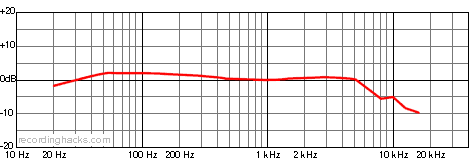Using Ribbon Mics to Warm up Digital Recordings
Article Content
It takes some work to get recordings to sound warm in our modern digital environments. It rarely sounds “amazing” on the way in. This usually results in adding a lot of processing. Often times, people lean on compression as an aid, but this isn’t always the best way. That is unless you’re going for an effected sound or just kissing it.
Compression is one of the most overused and misused processors. Learn more about using compression here. The longer I’ve been recording, the less I use compression. That is, unless I’m looking it to add a specific flavor. I don’t use it to make up for inconsistent playing.
Transformers
Sometimes, I just want to run through the circuitry of a compressor. This is a trick a lot of people do with Pultec EQs. It can add something to the sound that can’t really be gained otherwise. I’ll get deeper into that in another article.
Bring it Back
So, how do we warm up sounds when we’re recording straight to digital without plugins?
There’s a way. And it can be done with something as boring as an Mbox.
Cut the Ribbon
When tracking digital, I do most of my recordings with dynamic or ribbon mics. What?!?! No condensers?!? How could you?
It seems like everybody who gets into home recording sees a nice condenser microphone as the holy grail mic. Many drool over them in catalogs.
But, they rarely take into consideration the method that they’ll be recording.
Sizzle
Condensers have a harshness about them straight to digital.
There is a distortion or sizzle to the top-end that can be hard to eliminate. That same top end didn’t use to be a problem because analog tape machines would naturally attenuate it.
In fact, condenser mics were a welcome addition to the dark mics and tape that existed. But, now the pendulum has swung in the opposite direction.
Too Perfect
Digital has a wider frequency range than analog. At the top of that range, it can get pretty annoying to the human ear.
We often blame digital for sounding harsh. In reality, it’s more perfect than analog. It’s certainly more accurate. But, with accuracy, we lose charm.
Snake Charmer
Personally, I like to be charmed. I want a microphone to bring chocolate and flowers to my ears. I want my ears to swoon.
Condensers kind of get straight to the point. No courting. No long walks on the beach.
Take It Easy
I’ve found ribbon mics to take EQ better than condensers and dynamics. I can add top end without the fizz.
There is also less sibilance when recording vocals. Listen to this recording of a vocal using a Cascade Fat Head II Ribbon (with Lundahl transformer).
Without EQ:
With EQ:
Danger
One of the most difficult things about using ribbons is their fragility. They’re not the bruisers of microphones. They have to be handled with care.
When you do use them on vocals, you have to place them back a bit. I also recommend placing the mic above the singer looking down towards their nose. This way, the air from their mouths won’t directly reach the mic.
Pushing a lot of air can damage the ribbon. It’s always good to use a windscreen too. You have to be careful with placement if you’re using them on drums, which push a lot of air that can be damaging.
The Image
For those of us that play instruments and record ourselves, we often have a weird experience. We set up a nice mic, but when we listen back, it’s not a true representation of how our instrument really sounds.
I have found ribbons to represent an instrument most honestly. It’s the closest to how I hear it. It’s the Honest Abe of mics.
Numbers
Let’s look at the frequency curve of a few microphones.
Shure SM57

Cascade Fat Head
Neumann U87ai

If we look at the Fathead, we’ll see a decline in high frequencies near 10k. This can be used to advantage in the digital age. For me, this is where an acoustic guitar can start to sound annoying.
Actually, it’s where all guitars can sound like tin. The fact that there’s a dip there is doing me a favor. I don’t have to EQ it out. And, if I want to add some back in later, it’s going to be pleasant.
It’s for this same reason that violinists love ribbons.
Here is a recording of an acoustic guitar using a Cascade Fathead II Ribbon (with Lundahl transformer). I was clearly going for a Led Zeppelin 3 vibe.
Piggy Bank
Another advantage to buying a ribbon? They are more affordable than most high-end condensers.
There’s a lot of ribbons I love: Beyer, Royer, RCA, Coles — just to mention a few.
Lately, I’ve been loving Cascade Ribbons. It’s amazing they can make such a great sounding mic at the price they are asking. It’s $371 on Amazon for a Fathead II with Lundahl transformer. It definitely sounds like a far more expensive mic.
At this price point, it wouldn’t be hard for anyone to add a ribbon to their mic locker. Show some love to your ears this Valentines season.







